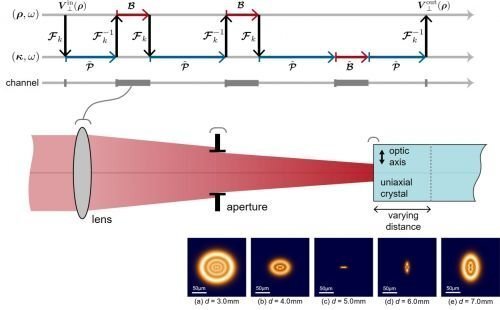S. Zhang, C. Hellmann, F. Wyrowski, Algorithm for the propagation of electromagnetic fields through etalons and crystals, Appl. Opt., 56(15):4566-4576 (2017)External link.
P. Ribes-Pleguezuelo, S. Zhang, E. Beckert, R. Eberhardt, F. Wyrowski,
A. Tünnermann, Method to simulate and analyse induced stresses for laser crystal packaging technologies, Opt. Express, 25(6):5927-5940 (2017)External link.
S. Zhang, H. Partanen, C. Hellmann, F. Wyrowski, Non-paraxial idealized polarizer model, Opt. Express 26, 9840-9849 (2018)External link.
